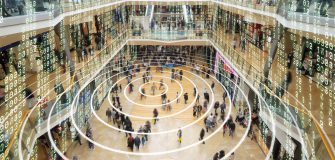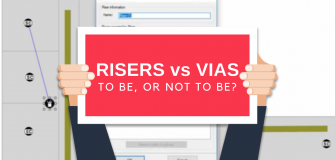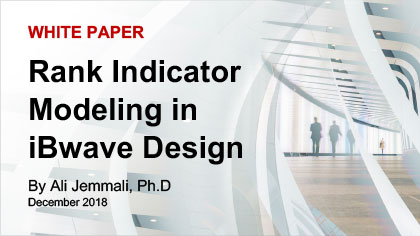The Road To Unity: Short and Long-Term Thinking
Share

Short-Term and Long-Term Approaches
When is a button much more than something you can click with a mouse on a user interface (or something that keeps both sides of your dress shirt working together)? The answer is simple.
When it generates a loud discussion that verges on an argument.
As mentioned in my last post, we rebuilt the iBwave Unity solution and launched it recently, and it was a long, hard slog to get there. Mockups were made, whiteboards were sullied and smudged, printouts were circulated, customers were consulted, and of course, positions on the look & feel were deeply entrenched and didn’t sway often.
This is normal in the product development process, where the end user is the focus and everyone has an opinion on what users want and, more importantly, need. Even regarding buttons.
Short-Term
We had to think of the current users that are familiar with the solution that helps them execute their everyday work in the wild world of wireless network deployments. Changing their user interface is always a shock, even when it’s for the better. And the newest version is WAY better. Deciding how to place information, where and buttons just so a user can save a few clicks is more work than you’d guess. It requires rethinking of what it is a user is trying to achieve and why they are doing a specific task. It’s just as much psychology as it is design.
Also needs change depending on who’s doing what task, when they are doing it in the course of a project, and who needs to know what. Which leads to a host of questions surrounding information layout, readability, accessibility and above all, the human desire for habits and repeatability. Most human brains look for patterns because it helps us make sense of the world. Same goes for using software – don’t change things too radically, because someone just got comfortable doing it one specific way.
So when we redesigned Unity it was critical to ensure that layout, button placement and page structure were taken into consideration depending on the task and user. That’s when the argument over the button placements arose. Luckily they were resolved without any violence.
Long-Term
But long-term thinking is key to success. Every product matures and evolves to meet new business and user requirements. Anticipating this is very difficult because evolution in software almost always means more features and therefore more complexity, both technically and what the user will experience. Complexity is the often enemy of usability. As many know, good design sometimes means taking away options so you can focus on what’s necessary.
We tried very hard to understand and anticipate how our Unity solution could be used beyond its current application. Who could be new users, what type of user would that be? Someone with a lot of computer savvy or someone who just wants a report? What would they need to do? How have the existing users evolved? Those questions and their answers are constantly evolving.
Often users don’t know what they want. Sometimes they do, which is great because that gives us a clear direction on how to proceed. Whatever the case, planning for the future of the solution is the most fun and most difficult part of the job. That goes well beyond deciding on functionality and where to place buttons and what flow of the screens would be easiest for the user to follow. It’s adding to a “living” set of code – kind of like growing another arm for a human. You just don’t want that living solution to turn into a freakish monster.
The Result
So far the feedback has been quite positive. And not just about the new page layout and UI. Part of the redesign involved screens that loaded more quickly, a key customer issue. No one likes to wait. We tried to simplify the information that was presented to our end users but not eliminate functionality. For our users, speed was equally as important as layout and functionality. Customers made it clear to us that performance matters.
We know we are on the right path to making Unity ever more user-centric, more responsive to our customers needs, and most importantly, a solution you want to sit down and use to make work days a little easier and productivity a little higher.
- Tell me one thing: Where’s the value? - June 30, 2016
- Unity Webinar – Recap on Project Management Best Practices - April 11, 2016
- Unity Webinar – A Cure for Project Management Woes - March 31, 2016






























